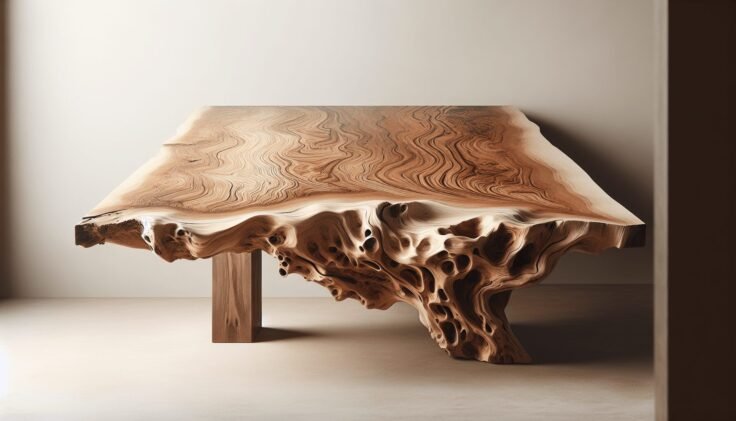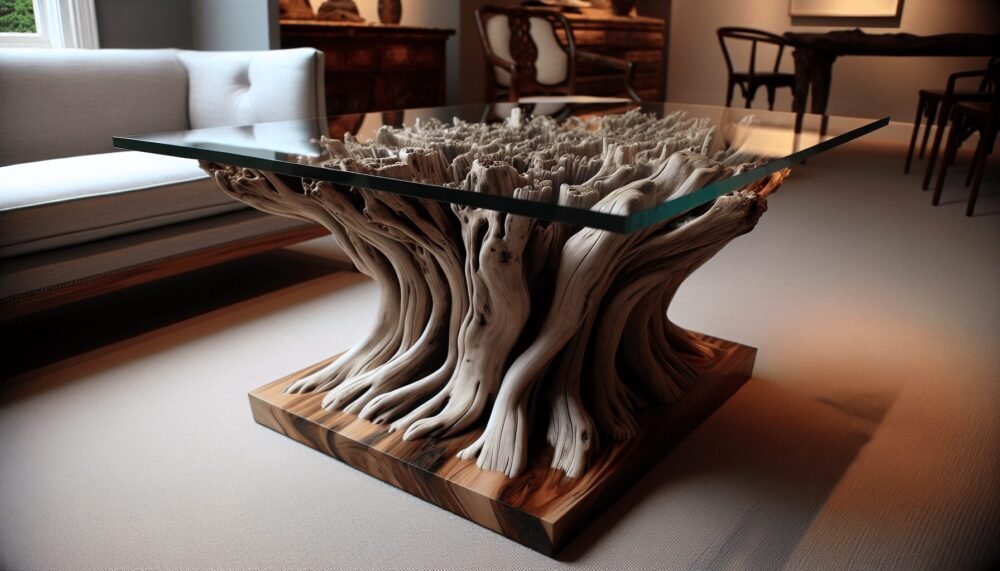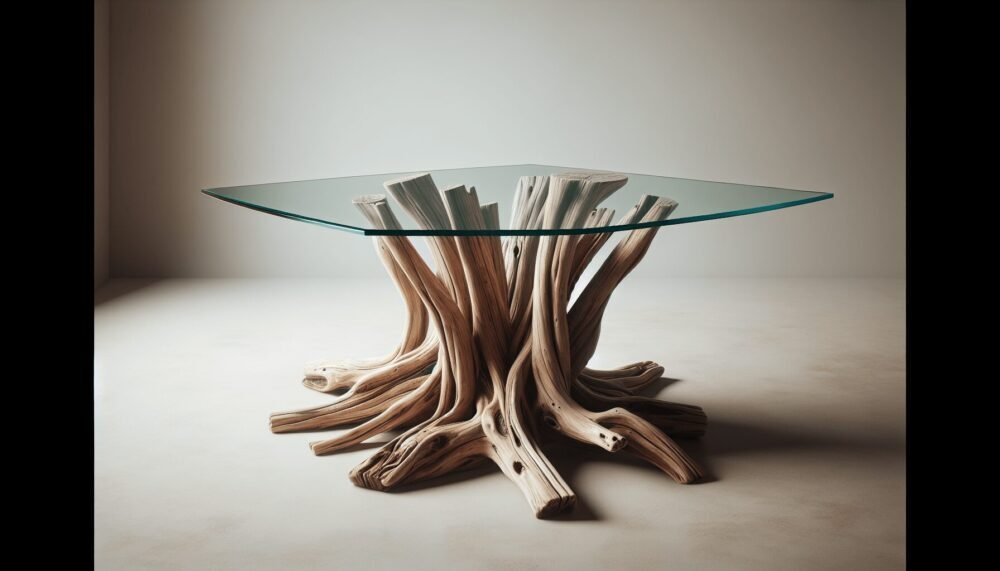Have you ever considered how nature’s artistry can enhance your living space? Driftwood, with its unique and rustic charm, offers a perfect way to bring a touch of the ocean into your home. Among the creative uses of driftwood is the crafting of tables, particularly those with driftwood legs that add character and a story to your decor. Let’s explore how you can incorporate a driftwood leg table into your home while understanding its creation, care, and benefits.
What is Driftwood?
Understanding Driftwood
Driftwood is wood that has been washed onto a shore or beach of a sea, lake, or river by the action of winds, tides, or waves. This wood undergoes a natural weathering process, giving it a worn, smooth appearance with a silvery shade. Each piece of driftwood is unique, shaped by its long journey through the water.
Origins of Driftwood
The origins of driftwood vary greatly. It can come from fallen branches, trees, or lumber lost from ships. Sometimes, it’s the remains of structures like piers or docks. Over time, this wood travels across water bodies, accumulating its distinct weathered look.
The Allure of Driftwood Leg Tables
Why Choose Driftwood Leg Tables?
A driftwood leg table is not only functional but also a piece of natural art. These tables appeal to those who love the coastal vibe or who appreciate sustainable and unique decor items. They’re versatile enough to fit in various decor styles, from rustic to contemporary, and bring a sense of history and nature inside.
The Aesthetic Appeal
The aesthetic appeal of driftwood lies in its irregular shapes and textures that suggest both strength and serenity. When crafted into table legs, driftwood provides a striking contrast or complement to a table’s surface, depending on its material and finish.
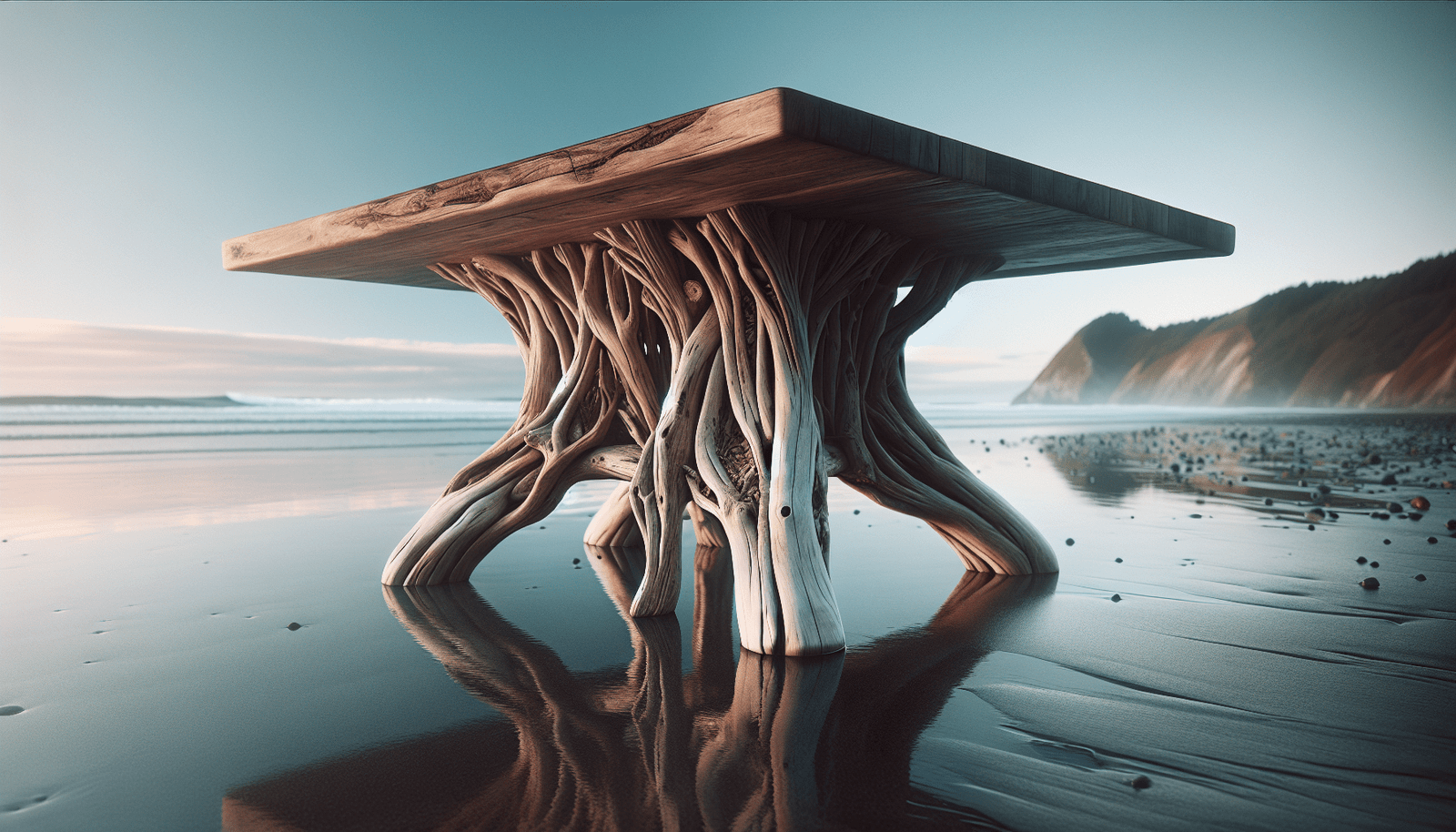
Crafting a Driftwood Leg Table
Selecting the Right Driftwood
Choosing the right piece of driftwood is crucial for crafting a table. Look for sturdy pieces without cracks that could compromise the integrity of the leg. The driftwood should also be dry and free of pests, which can damage your finished table.
Designing Your Table
Designing a driftwood leg table requires creativity and vision. You can pair driftwood legs with various table tops, such as glass, reclaimed wood, or metal. Consider the balance and proportion to ensure the table is stable and aesthetically pleasing.
Building Process
Building a driftwood leg table involves securing the driftwood legs to the tabletop and ensuring the entire structure is stable. This might require trimming or sanding the driftwood to fit your design concept. Sealing or finishing the wood can protect it and enhance its color.
Benefits of Driftwood Leg Tables
Unique and Personalized Decor
Each driftwood leg table is like a fingerprint, unique, and tells its own story. No two tables are alike, providing you with a statement piece that reflects personal taste and love for natural aesthetics.
Environmentally Friendly
Using driftwood is an eco-friendly choice. It repurposes natural waste, giving new life to materials already available without further harming the environment. By choosing driftwood, you’re contributing to sustainability and promoting the use of recycled materials.
Durability and Longevity
Once properly treated, driftwood is highly durable. Its natural resistance to decay makes it particularly suitable for furniture. With proper care, a driftwood leg table can last many years, retaining its beauty and strength.
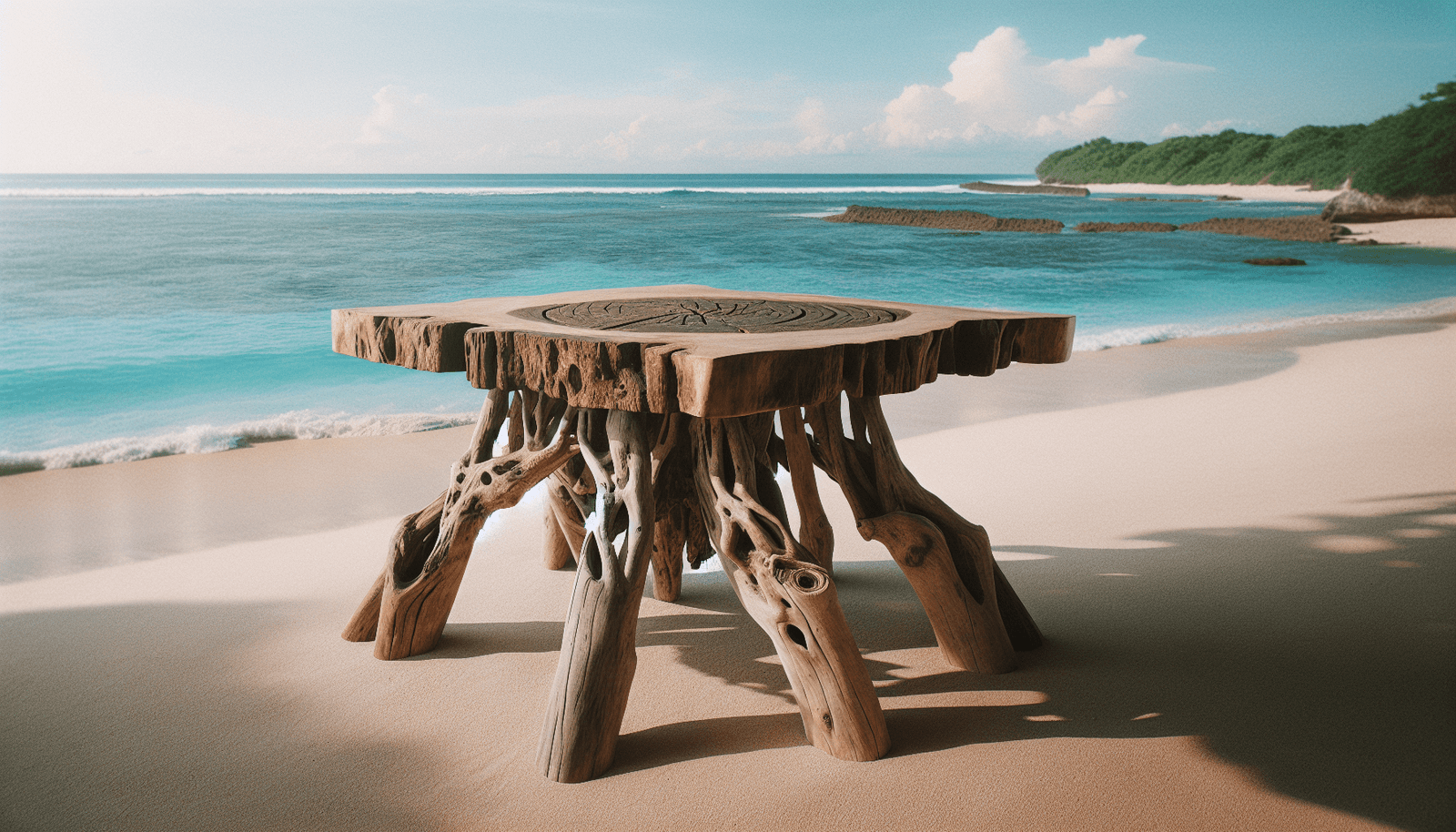
Caring for Your Driftwood Leg Table
Regular Maintenance
Maintaining a driftwood table involves regular dusting and occasional cleaning with a damp cloth. It is advisable to use furniture polish or oil to maintain its luster and protect it from wear and tear.
Handling Spills and Stains
In case of spills, it’s important to wipe them up promptly to prevent staining the wood. For tougher stains, gently sanding the affected area and reapplying a wood finish may help.
Environmental Considerations
Avoid placing your driftwood leg table in direct sunlight or near heat sources, as this can cause the wood to crack or fade over time. Adequate humidity levels can help preserve the wood’s integrity.
Incorporating Driftwood Tables into Various Spaces
Living Rooms
In a living room, a driftwood leg table can serve as a coffee table or central conversation piece. Its rustic charm can enhance both traditional and modern decor settings, providing a focal point that attracts admiration.
Outdoor Spaces
Due to its natural resistance to decay, driftwood is also suitable for outdoor furniture. A driftwood leg table can transform a patio or garden setting, blending seamlessly with the natural surroundings.
Dining Areas
For a more intimate dining experience, a driftwood leg table can serve as a unique dining table. Pair it with simple dining chairs that don’t overpower the table’s unique characteristics.
Conclusion
The driftwood leg table isn’t just a piece of furniture; it’s a piece of art that brings nature indoors. Whether you’re seeking an eco-friendly option, a unique design, or simply love the idea of owning a table with a story, a driftwood leg table could be the perfect addition to your home. Its enchanting beauty and timeless appeal will ensure it remains a cherished focal point in your home for years to come. Consider the possibilities and let your imagination guide you in finding the perfect driftwood table for your space.

